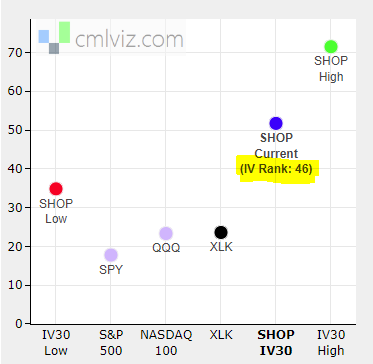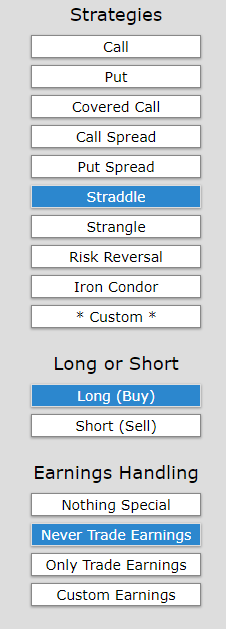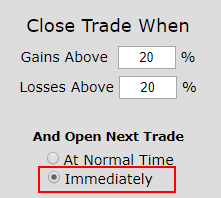Shopify Has a Trading Pattern That's Working Right Now, Exactly, in This Market

Shopify Has a Trading Pattern That's Working Right Now, Exactly, in This Market
Date Published: 2018-11-28
Disclaimer
The results here are provided for general informational purposes, as a convenience to the readers. The materials are not a substitute for obtaining professional advice from a qualified person, firm or corporation.Preface
Market volatility has presented an opportunity, and while some vol trades are fading, one is not and with the G20 summit coming this weekend, we have another catalyst in play.It's time to take advantage of volatility. Fear, uncertainty, doubt, unclear news headlines -- these are all trade-able events, at any time, without concern for earnings. Today we look at exactly what has worked in Shopify (SHOP).
Here is a chart of SHOP's 30-day implied volatility (IV30®). We can see it is in the 46th percentile, so slightly below the mid point in between the 52 week low and high.

You can see this chart for any company at any time, for free, on Risk Chart at CMLviz.com. The IV30® is the implied price movement reflected by the option market in the stock price for the next 30 calendar days -- it is forward looking.
The Short-term Option Volatility Trade in Shopify
We will examine the outcome of going long a short-term at-the-money (50 delta) straddle, in options that are the closest to 14-days from expiration. But we have a rule -- it's a stop and a limit of 20%, and, we back-test re-opening the position immediately, as opposed to waiting for 14-days later.
Let's not worry about stock direction or earnings, let's try to find a back-test that benefits from volatility. Here it is, first, we enter the long straddle.

Second, we set a very specific type of stop and limit:

At the end of each day, the back-tester checks to see if the long straddle is up or down 20%. If it is, it closes the position, and re-opens at the same time, another long straddle, but this one now re-adjusted for what is the newest at-the-money strike price.
We have a full blown tutorial write up on this type of stop/limit behavior in the Discover Tab: Stops & Limits Roll Timing What does "open again at normal time" vs "immediately" mean?
The Results
We back-tested this only over the last seven-weeks. We are hyper focusing not on a long drawn out pattern, but rather this time, right now, this period of volatility.
| SHOP: Long 50 Delta Straddle | |||
| % Wins: | 70% | ||
| Wins: 7 | Losses: 3 | ||
| % Return: | 329% | ||
Tap Here to See the Back-test
The mechanics of the TradeMachine® Stock Option Backtester are that it uses end of day prices for every back-test entry and exit (every trigger).
Notice that this has triggered a trade 10 times in the last seven-weeks. This is a fast moving, re-adjusting straddle. The idea is simple:
Take well bounded risk, small, and direction-less, and let a tweet, a news headline, an Apple headline, a day of pessimism or a day of optimism, whatever -- move the market, as it has so often in this new volatility regime.
Setting Expectations
Since we use end of day open and closes, while this strategy has an overall return of 329%, the trade details keep us in bounds with expectations:➡ The average percent return per trade was 11.8% over each few day period.
➡ The average percent return per winning trade was 50.2% over each few day period.
➡ The percent return per losing trade was -23.4% over each few day period.
Not only are we seeing a high winning percentage, but also that the average win is twice as large as the average loss. Further, this trade takes no stock direction risk at all.

WHAT HAPPENED
This is how people profit from the option market, and Trade Machine gives you the capacity to trade beyond luck.Tap Here, See for Yourself
Risk Disclosure
You should read the Characteristics and Risks of Standardized Options.
Past performance is not an indication of future results.
Trading futures and options involves the risk of loss. Please consider carefully whether futures or options are appropriate to your financial situation. Only risk capital should be used when trading futures or options. Investors could lose more than their initial investment.
Past results are not necessarily indicative of future results. The risk of loss in trading can be substantial, carefully consider the inherent risks of such an investment in light of your financial condition.
Please note that the executions and other statistics in this article are hypothetical, and do not reflect the impact, if any, of certain market factors such as liquidity and slippage.


